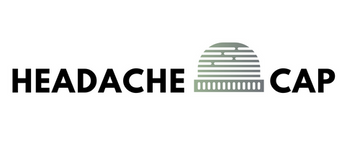How to Get Rid of a Cluster Headache
Cluster headaches are debilitating and painful, but they're not rare. About 1% of the population suffers from these intense headaches that come in cycles. This article will show you how to manage your cluster headache so you can get back to living your life without pain or fear of another attack.
Track your headache triggers.
-
Identify your headache triggers. Some people find that certain foods or activities trigger headaches, while others are affected by changes in their sleep patterns or stress levels, such as working overtime at work.
-
Keep a record of your headaches for one month, including what time of day you experience them and what you were doing before the onset of pain. This way you can see if there is any correlation between when you had your headaches and when or how stressed out or tired you felt that day.
Avoid your headache triggers.
-
Stay out of the sun.
-
Avoid dehydration.
-
Avoid alcohol and caffeine.
-
Reduce stress levels and get adequate sleep, if possible.
Quit smoking.
Smoking is a major trigger for cluster headaches. Nicotine constricts blood vessels, which can lead to a headache. If you're used to smoking several cigarettes or cigars every day, quitting cold turkey will likely cause withdrawal headaches that could last for days or weeks. So if you have chronic cluster headaches, it's best to quit gradually over a period of time—for example, by gradually cutting back on the number of cigarettes you smoke each day until you're down to zero before starting cold turkey.
Reduce stress.
Reducing stress is the most important step you can take to avoid headaches. If a headache is triggered by stress, it's likely that your attack will be worse if you're under pressure or worried about something else.
Stress may come in many forms: work problems, relationship issues, and other daily pressures can all trigger headaches; but even looking at a stressful situation from an objective angle (such as considering how your actions would affect someone else) can make it more difficult for you to handle.
Take care of your neck.
-
If you’re like me, the first thing that comes to mind when it comes to cluster headaches is “I need a massage!” It can be tempting to rub your neck, but this is actually not a good idea. Cluster headaches are caused by an overactive nerve in your face called the trigeminal system; massaging it will only make things worse.
-
Instead of massaging, ice or heat your neck muscles as needed.
-
Use a neck pillow while sleeping if you suffer from frequent cluster headaches. Make sure that it doesn't push down on your head too much (you should still be able to rest comfortably on it), and look for one with a firm but soft material so that it won't irritate any sensitive spots in your skin.
-
You can also try our Neck Pillow to stretch the neck and the cervical spine.
Soothe the pain with hot and cold treatments.
Hot and cold treatments are also important for relieving the pain of cluster headaches. A hot compress can be applied to the temple area, while a cold towel can be placed on your forehead. A cold compress or ice pack can also be placed in your armpit or over your eyes. You can also use the Headache Cap to apply hot and cold therapy to your head. The cap is made of soft material that won't irritate your skin and has an inner lining that you can use to hold ice packs or hot water bottles.
Use a pressure point massage.
If you have a cluster headache, the best way to get rid of it is to use a pressure point massage. This can be done by yourself or with help from someone else, but either way, it's important that you know where to apply pressure so that you can find relief.
The first step in doing this is finding a pressure point on the side of your neck. To do this gently run your fingers up the side of your neck until they reach an area about 1 inch below the earlobe—this should be in between two muscles in soft tissue. Once you've located this spot, place two fingers (thumb and forefinger) onto it and apply firm but gentle pressure for 30 seconds to 2 minutes.
Conclusion
We hope you find these tips helpful and are able to reduce the frequency and pain of your headaches. If you still have questions or need more information, please contact us at customer service!





